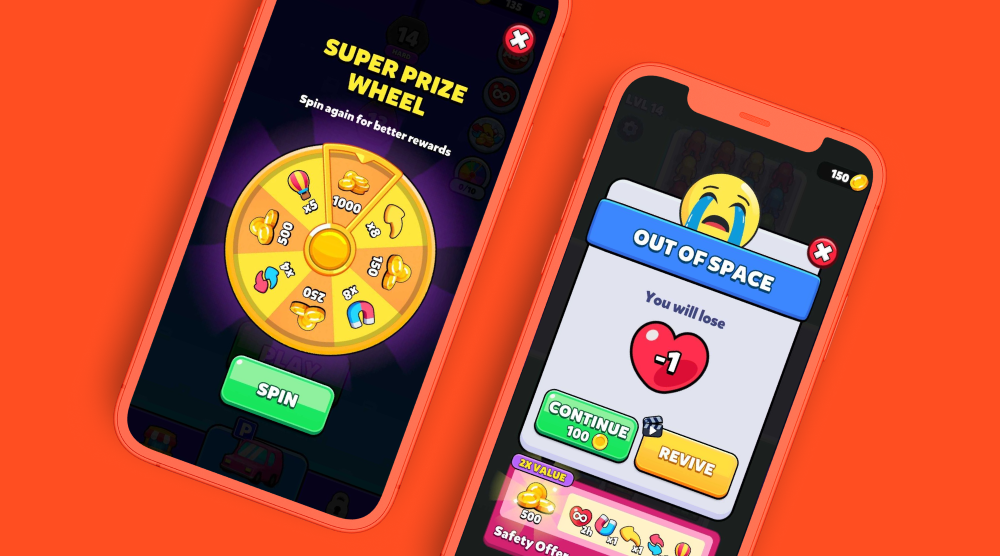Hyper-casual games can be incredibly profitable and scale very quickly - if you can get them published. Easier said than done, right? Well, there are some best practices you can follow when going from ideation to scaling that can help your game become a hit. In this 2-part series from his talk at Mobidictum, Nadav Ashkenazy, SVP Supersonic, walks through the publishing funnel and how to succeed at each step. You can also see his entire presentation from the event below:
In part 1, the focus is on ideation. Getting hyper-casual games published all starts with thinking of a killer concept that shows they have the potential to scale. Consider the tips below as you brainstorm the next hyper-casual hit.
Follow a methodology to come up with a great hyper-casual concept
Coming up with a great idea for a game is often one of the most difficult parts of the process - you need to think of a concept that is highly marketable and can scale while engaging users and feeling fun to play. A good place to start is running a market analysis that indicates what’s currently popular in the hyper-casual industry. Seeing the mechanics, sub-genres, elements, and narratives of the games already at the top can inspire your own concept and ensure it has marketable aspects.
Your market analysis doesn’t need to be an extensive, time-consuming project. For example ours is a simple sheet that breaks games down into publisher, sub-genre, narrative, mechanic (check out what mechanics are trending here), and elements.
After running your market analysis, take a look on social media for new trends that could be integrated into a hyper-casual concept. Fidget trading games from TikTok, for example, were the inspiration behind games like Fidget Trading 3D from Maglab and Fidget Toys Trading: 3D Pop It Games & Fidget Trade from Freeplay Inc that reached the top of the hyper-casual charts.
Taking into account social media trends and your market analysis, start ideating on an innovative concept - you can use the following 5 methodologies to guide you.
Methodology #1: Create a whole new world
Try to think of an entirely new narrative and/or mechanic that’s not yet in the hyper-casual charts. This approach often requires a lot of creativity because there aren’t other examples of a similar game which you can use for inspiration. There’s also the risk factor of accessibility - since this would be a brand-new idea that hasn’t proven its popularity in the hyper-casual charts, it’s unclear if users will understand and enjoy your concept. But, that’s why you can test its marketability and ensure it’s a fit for the market.
Going Balls is an example of a game that followed this methodology - no other successful hyper-casual game at the time had the same core mechanic. The initial prototype testing proved that users enjoyed playing the game, indicated by an average D0 playtime of over 850s and D1 retention rates of 37-42%. Scaling this original concept and making some game tweaks helped Going Balls reach #1 on Android in the US and generate significant profit - all while maintaining its strong in-game metrics.
Methodology #2: Introduce a twist to an existing successful concept
Look to an existing hyper-casual game’s template then introduce a twist to the narrative or mechanic. Since the game inspiring yours is already a popular concept, it’s more likely to have high marketability power, while the twist makes your game feel original and new.
For example, 911 Emergency Dispatcher, was inspired by Chat Master. Both are decision-making games that simulate a real-world experience, but 911 has an entirely different narrative - the game puts users in the front seat as an emergency dispatch and adds a new decision-making opportunity to determine which service to dispatch, if any, at the end of every level.
Methodology #3: Adapt a popular mechanic or narrative for a different sub-genre
Hyper-casual games have many different sub-genres, like simulation, action, and puzzle. If you see a mechanic or narrative performing well in the charts, try adapting it for a different sub-genre. Reimagining a popular game in this way helps attract users that gravitate towards a different sub-genre and adds a new element to your game that makes it stand out.
Bridge Race, for example, leveraged the stacking mechanic of runner games in the top charts and changed it to fit the io sub-genre. The popular mechanic reinvented in an innovative way helped Bridge Race become the most downloaded game in the world in Q2.
Methodology #4: Combine two successful elements
Take one element each - like the core mechanic or theme - from two existing, popular games and combine them to create a new concept. Each element has already proven to be popular, so applying these features to a new concept helps ensure your game has high marketability power.
Shortcut Run from Voodoo combined the stacking elements from popular games like Stair Run with the shortcut element of top games like Aquapark from Voodoo. Bringing both popular features into one game and refining the gameplay led Shortcut Run to the top of the charts.
Methodology #5: Evolve a successful concept
Build upon a concept that’s already performing well to introduce a new game to users that still feels familiar and accessible. For example, Knock Em All from Voodoo evolved the core mechanic and elements of Knock Balls. While maintaining the first-person POV and shooter mechanic of Knock Balls, Knock Em All introduced moving obstacles and player motion (like jumping) that made gameplay more challenging and engaging.
Once you’ve got a concept that you think has legs, it’s time for testing to prove it’s marketable and scalable.
You’ve got a great idea - what’s next?
So you leveraged one of these methodologies and got yourself an awesome hyper-casual concept. Time to put it to the test - literally. In the next part of this series, learn how to run a marketability test and analyze the results to determine if your concept is a product-market fit that can scale. Additionally, you’ll discover best practices for building out your game and maximizing profitability as the last pieces of the publishing process come together.
Let's put these tips to good use
Publish your game with Supersonic


